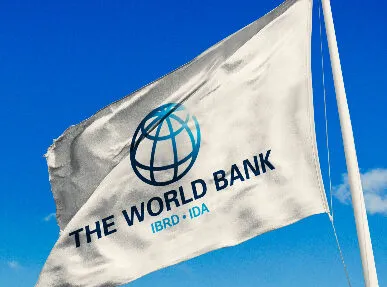The World Bank’s food price index eased in early April 2024 after falling by about 4.0% in the first quarter of 2024, 9.0% lower than a year earlier.
Subcomponent indexes for grains, oils, meals, and other foods fell between 2.0% and 5.0%. Maize prices tumbled by about 11% and wheat prices declined by 4% in 2024 quarter one, together driving the 4.0% reduction in the overall grains index.
Both wheat and maize prices hit three-year lows during the quarter, with the downtrend continuing in early April 2024.
The decline in maize prices was attributed to competitively priced offers from the Black Sea region, larger production in major exporters, and favorable prospects for the next harvest, with global maize production in the 2023-24 season expected to increase by 6.0% to an all-time high.
“Downward pressure on wheat prices derived from robust exports from Russia and Ukraine and the second-highest global production on record in 2023-24. The collapse of the Black Sea Grain Initiative had minimal fallout, as Ukraine has so far been able to continue exporting via seaborne corridors and new overland routes”, the World Bank pointed out.
Rice prices increased by about 4.0% in the first quarter of 2021, standing 28.0% higher than a year earlier, reflecting supply concerns in major exporting countries related to El Niño and continued export restrictions from India.
However, the prices retreated in February, March, and early April, reflecting the depreciation of Thailand’s baht and Viet Nam’s dong against the U.S. dollar, sluggish global rice demand amid increased prices, a seasonal supply increase from the harvest in Viet Nam, and ongoing offseason harvests of irrigated fields in India and Thailand.
The oils and meals price index also declined by 5.0% in 2024 quarter one, reaching a level 17.0% lower than a year earlier.
This decline was driven by a 14.0 fall in soybean oil prices, a 13.0% drop in soybean meal prices, and a 5.0% decrease in soybean prices, partly offset by an 8.0% increase in palm oil prices.
Downward pressures on soybean prices stemmed from near-record production in Brazil, a near doubling of production in Argentina, and subdued Chinese demand. Global soybean production in 2023-24 is projected to increase by 5.0%, to a new record.
Latest Stories
-
Mechanising the cashew economy of Ghana to rake in more profits
17 minutes -
Ronaldo fires Portugal into Nations League final with 2-1 win over Germany in Munich
24 minutes -
Anass Sabit: Beyond Hajj – My spiritual journey in Mecca reveals Islam’s “lesser” pilgrimage, Umrah
27 minutes -
Chelsea sign Ipswich striker Delap in £30m deal
30 minutes -
GH₵1 per litre isn’t a small money – GPRTU slams gov’t over new fuel levy
1 hour -
Sam George outlines evidence-based plan to reduce mobile data costs
1 hour -
AT Ghana gets Canadian investor, Rektron Group
2 hours -
Mahama to set up inter-ministerial committee to implement economic dialogue recommendations
2 hours -
Photos: Nurses and midwives’ strike leaves some hospitals empty
2 hours -
Chief Imam calls for peace in Bawku
2 hours -
GCB Bank pays courtesy visit to National Chief Imam ahead of Eid al-Adha
2 hours -
Luv FM High School debate 2025 launched
2 hours -
Researchers explore water access challenges among Kumasi’s urban poor amid climate change
2 hours -
GES appoints Daniel Fenyi as Head of Public Relations
2 hours -
I pray a future NPP gov’t will end politically-motivated justice
3 hours

